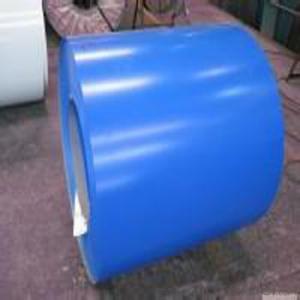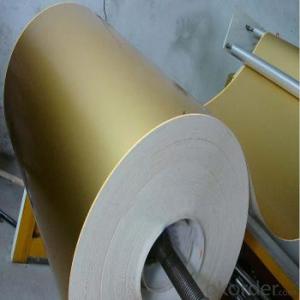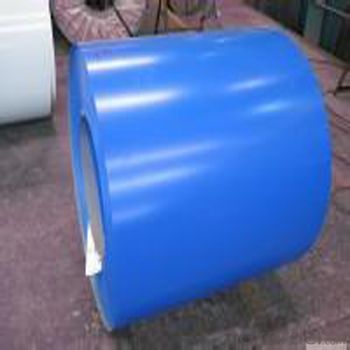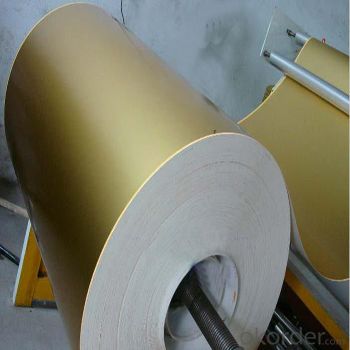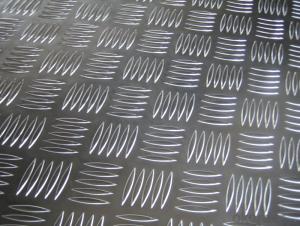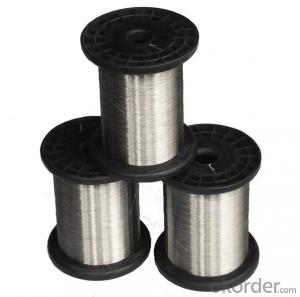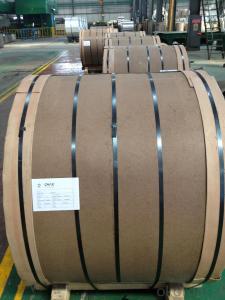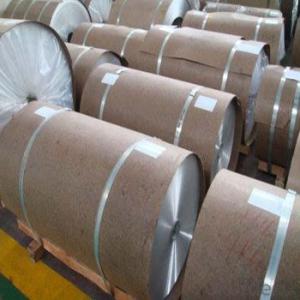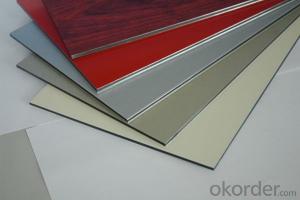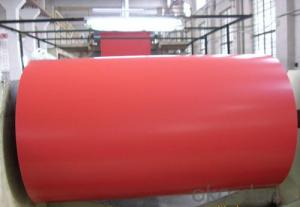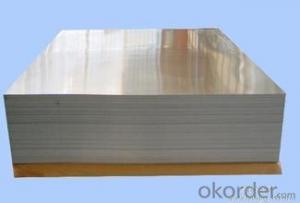Aluminum Sheets for Horse Trailers - Coated Aluminium Sheet and Coils
- Loading Port:
- Shanghai
- Payment Terms:
- TT or LC
- Min Order Qty:
- 1 m.t.
- Supply Capability:
- 1000 m.t./month
OKorder Service Pledge
OKorder Financial Service
You Might Also Like
1.Specification
ALLOY: AA1***(AA1050,AA1060,AA1070,AA1100etc)
AA3***(AA3003, AA3004,AA3005, AA3105etc)
AA5***(AA5052,AA5083,AA5754 etc)
TEMPER: H14,H16,H18,H22,H24,H26,H32,O/F
THICKNESS: O.O3mm-3.0mm
WIDTH: 30mm-1700mm
COATING: PE(POLYESTER),PVDF,EPOXY
PAINTING THICKNESS: STANDARD 16-25 MIC, MAX 40 MIC
COLOR: ACCORDING TO RAL COLORS OR CUSTOMER'S SAMPLES
STANDARD: GB/T 17748-1999
Special specification is available on customer's requirement
2.Description
In Europe aluminium experiences high rates of recycling, ranging from 42% of beverage cans, 85% of
construction materials and 95% of transport vehicles.Recycled aluminium is known as secondary aluminium, but maintains the same physical properties as primary aluminium. Secondary aluminium is produced in a wide range of formats and is employed in 80% of alloy injections. Another important use is for extrusion.
White dross from primary aluminium production and from secondary recycling operations still contains useful quantities of aluminium that can be extracted industrially.The process produces aluminium billets, together with a highly complex waste material. This waste is difficult to manage. It reacts with water, releasing a mixture of gases (including, among others, hydrogen, acetylene, and ammonia), which spontaneously ignites on contact with air;contact with damp air results in the release of copious quantities of ammonia
gas. Despite these difficulties, the waste has found use as a filler in asphalt and concrete.
3.Our advantage
We promise the best quality and price!
4.Pictures

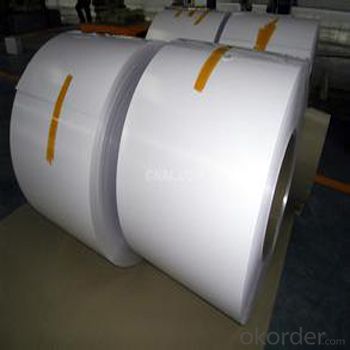
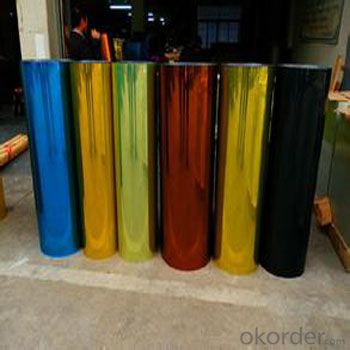
5.FAQ
1)what is aluminum?
Aluminium (or aluminum; see spelling differences) is a chemical element in the boron group with symbol Al and atomic number 13. It is a silvery white, soft, nonmagnetic, ductile metal. Aluminium is the third most abundant element (after oxygen and silicon), and the most abundant metal in the Earth's crust. It makes up about 8% by weight of the Earth's solid surface.
Aluminium metal is so chemically reactive that native specimens are rare and limited to extreme reducing environments. Instead, it is found combined in over 270 different minerals.The chief ore of aluminium is bauxite.
2)What's kind of payment term we can supply?
CIF,CFR, FOB and other.
3)Can we supply samples?
Yes, we can!
- Q: What are the different methods of joining aluminum sheets?
- There are several methods of joining aluminum sheets, each with its own advantages and suitability for specific applications. These methods include: 1. Welding: Aluminum sheets can be joined by various welding techniques such as Tungsten Inert Gas (TIG) welding, Metal Inert Gas (MIG) welding, and Resistance Spot Welding (RSW). TIG welding is commonly used for thin aluminum sheets, offering precise control and high-quality welds. MIG welding is faster and more suitable for thicker sheets. RSW uses localized heat and pressure to create strong welds in a short time. 2. Adhesive bonding: This method involves using adhesives specifically designed for aluminum bonding. Adhesive bonding provides excellent strength, even distribution of stress, and corrosion resistance. It is frequently used in applications where aesthetics and weight reduction are important, such as in the automotive and aerospace industries. 3. Mechanical fastening: Mechanical fastening methods include riveting and bolting. Riveting involves joining aluminum sheets by deforming a rivet that passes through pre-drilled holes, while bolting uses screws or bolts to hold the sheets together. These methods are suitable for temporary or semi-permanent joints and offer easy disassembly if needed. 4. Friction stir welding: This innovative method uses a rotating tool to generate frictional heat between the aluminum sheets, creating a plasticized region that is stirred together to form a solid-state weld. Friction stir welding is particularly useful for large and complex aluminum structures, providing high strength and integrity. 5. Clinching: Clinching is a cold-forming process that uses a punch and die to join aluminum sheets without the need for heat or additional materials. The sheets are pressed together, creating a mechanical interlock and a strong joint. This method is cost-effective, efficient, and suitable for joining dissimilar metals. 6. Laser welding: Laser welding utilizes a high-energy laser beam to melt and fuse the aluminum sheets together. It offers precise control, minimal heat input, and high welding speeds, making it suitable for thin and delicate aluminum sheets. Laser welding also provides excellent aesthetics and minimal distortion. The choice of joining method depends on various factors such as the application requirements, material thickness, cost considerations, and desired joint strength. Each method has its own advantages and limitations, and selecting the most appropriate method is crucial to ensure a successful and durable joint.
- Q: Can aluminum sheets be used for bus shelters?
- Yes, aluminum sheets can be used for bus shelters. Aluminum is a lightweight and durable material that is commonly used in construction projects, including bus shelters. It offers excellent resistance to corrosion, making it suitable for outdoor applications where it may be exposed to harsh weather conditions. Additionally, aluminum sheets can be easily formed and fabricated into various shapes and sizes, allowing for customized designs and easy installation. The use of aluminum sheets for bus shelters also provides a cost-effective solution as it requires minimal maintenance and has a long lifespan.
- Q: This question asks for a list of adhesive types that are suitable for bonding aluminum sheets. It is important to provide a variety of options to give a comprehensive answer.
- <p>There are several types of adhesives used for bonding aluminum sheets together, including epoxy resins, which offer strong adhesion and resistance to heat and chemicals; polyurethane adhesives, known for their flexibility and durability; acrylic adhesives, which provide good adhesion and are easy to use; cyanoacrylates or 'super glues,' which bond quickly and are great for small, precise applications; and silicone adhesives, which are excellent for high-temperature applications and offer flexibility. Each type has its own advantages and is chosen based on the specific requirements of the bonding task, such as strength, flexibility, and resistance to environmental factors.</p>
- Q: This question asks for guidance on selecting a trustworthy supplier for purchasing aluminum sheets.
- <p>To choose a reliable supplier of aluminum sheets, consider the following: Check their reputation by reading reviews and testimonials. Ensure they have a valid certification and adhere to industry standards. Evaluate their product quality by requesting samples or visiting their production site. Assess their delivery times and reliability. Confirm they offer competitive pricing without compromising on quality. Look for suppliers with good customer service and after-sales support. Finally, consider their financial stability and ability to fulfill large orders.</p>
- Q: Is it possible to install aluminum sheets on an existing roof structure?
- <p>Yes, aluminum sheets can be installed on existing roofs. This process typically involves removing the old roofing material and ensuring the roof structure is sound. Aluminum sheets are lightweight, durable, and resistant to corrosion, making them a popular choice for roof installations. They can be installed over a solid substrate, such as plywood or metal decking, and often require a proper underlayment to ensure watertightness. It's important to follow manufacturer guidelines and local building codes when installing aluminum sheets on an existing roof. Professional installation is recommended to ensure the roof's integrity and longevity.</p>
- Q: Are aluminum sheets resistant to chemicals?
- Yes, aluminum sheets are generally resistant to a wide range of chemicals.
- Q: Can aluminum sheet be used in marine environments?
- Yes, aluminum sheet can be used in marine environments. Aluminum is a popular material choice for marine applications due to its excellent corrosion resistance. It forms a protective oxide layer on its surface, which helps to prevent further corrosion even in saltwater environments. Additionally, aluminum is lightweight, which makes it an ideal choice for marine applications where weight reduction is crucial. Aluminum sheet is commonly used in boat hulls, decks, and other marine structures due to its durability, strength, and resistance to corrosion.
- Q: why does the bubble apear a few minutes later after putting aluminum sheet into diluted hydrochloric acid?
- Aluminum element is extremely activated and will react with oxygen, generating aluminum oxide, once being exposed in air, so there is a layer of aluminum oxide on the surface of daily aluminum products including aluminum sheet. When aluminum sheet is put into diluted hydrochloric acid, aluminum oxide on the surface will firstly react with hydrochloric acid, generating aluminium chloride and water, the process won’t generate bubble, but after finishing the reaction of aluminum oxide on the surface, when the exposed aluminum element reacts with hydrochloric acid, generating aluminium chloride and oxygen, the bubble appears.
- Q: What are the different methods for cutting aluminum sheets?
- Aluminum sheets can be cut using various methods that are commonly employed. 1. Shearing: To make a straight cut through the aluminum sheet, a sharp blade is used in this method. Shearing is typically used for thinner sheets and results in clean and straight cuts. 2. Sawing: Another method for cutting aluminum sheets is sawing. It involves the use of a saw blade with small teeth to cut through the material. Sawing can be done manually or with the assistance of power tools like band saws or circular saws. 3. CNC Machining: For highly precise cutting of aluminum sheets, Computer Numerical Control (CNC) machining is employed. This method utilizes a computer-controlled machine that follows programmed instructions to achieve the desired shape. CNC machines are capable of creating complex cuts and shapes with great accuracy. 4. Laser Cutting: A non-contact method, laser cutting, employs a high-powered laser to cut through aluminum sheets. The laser beam melts or vaporizes the aluminum, resulting in a clean and precise cut. Laser cutting is commonly used for intricate designs and offers a high level of precision. 5. Waterjet Cutting: Waterjet cutting involves the use of a high-pressure jet of water mixed with an abrasive substance to cut through aluminum sheets. This method is versatile and can be used for various materials and thicknesses. It produces clean cuts without generating heat, making it suitable for heat-sensitive materials as well. 6. Plasma Cutting: Plasma cutting utilizes a high-temperature plasma arc to cut through aluminum sheets. The plasma arc melts the metal and blows away the molten material, creating the desired cut. This method is commonly used for thicker aluminum sheets and can be done manually or with the assistance of CNC machines. These different cutting methods offer varied precision levels, speeds, and suitability for different sheet thicknesses and designs. The choice of cutting method depends on factors such as the desired cut quality, aluminum sheet thickness, and specific project requirements.
- Q: Can aluminum sheets be welded or joined together?
- Yes, aluminum sheets can be welded or joined together. Aluminum is a highly weldable material and can be joined using various welding techniques such as gas tungsten arc welding (GTAW), gas metal arc welding (GMAW), and laser welding. These techniques utilize heat to melt the aluminum sheets and create a strong bond. Additionally, aluminum sheets can also be joined using mechanical fasteners like screws, rivets, or adhesive bonding. The choice of welding or joining method depends on the specific application and desired outcome.
Send your message to us
Aluminum Sheets for Horse Trailers - Coated Aluminium Sheet and Coils
- Loading Port:
- Shanghai
- Payment Terms:
- TT or LC
- Min Order Qty:
- 1 m.t.
- Supply Capability:
- 1000 m.t./month
OKorder Service Pledge
OKorder Financial Service
Similar products
Hot products
Hot Searches
Related keywords
